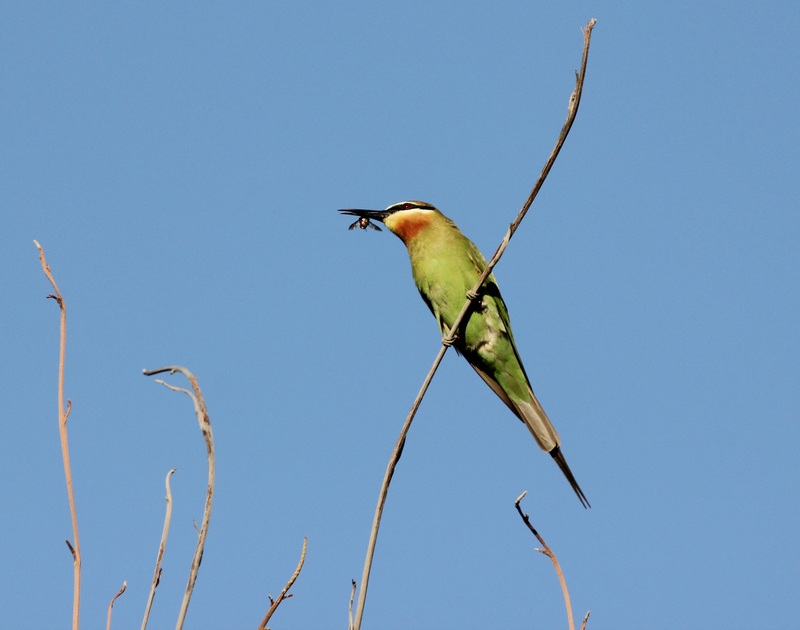|
| Query: Common blue | Result: 408th of 981 | |
Madagascar bee-eater, olive bee-eater (Merops superciliosus)
| Subject: | Madagascar bee-eater, olive bee-eater (Merops superciliosus)
| | Poster: | Wiki Photos (---@---.---)
| |

| Resolution: 3300x2600
File Size: 3088246 Bytes
Date: 2012:10:27 17:05:25
Camera: Canon EOS 550D (Canon)
F number: f/10.0
Exposure: 1/640 sec
Focal Length: 400/1
Upload Date: 2017:03:01 15:20:44
|
ERROR : Server Busy(-1105)
ERROR : Server Busy(-1105)
Madagascar bee-eater, olive bee-eater (Merops superciliosus)
Description
Deutsch: Madagaskarspint (Merops superciliosus) mit gefangenem Insekt bei der Isalo Ranch in Madagaskar
English: Madagascar Bee-eater (Merops superciliosus) with its prey on Isalo Ranch in Madagascar
Date November 2012
Author Leyo https://commons.wikimedia.org/wiki/User:Leyo
Source: https://commons.wikimedia.org/wiki/File:Merops_superciliosus_2.jpg
The olive bee-eater or Madagascar bee-eater (Merops superciliosus) is a near passerine bee-eater species in the genus Merops. It is native to the southern half of Africa.
|
Comments |
|---|
| | Guest |
|
Scientific Name: Merops superciliosus Linnaeus, 1766
Common Names: Olive Bee-eater, Blue-cheeked Bee-eater, Madagascar Bee-eater
French: Guêpier de Madagascar, Guêpier malgache German: Madagaskarspint Spanish: Abejaruco malgache
Taxonomy: Merops superciliosus Linnaeus, 1766, Madagascar. |
^o^
Animal Pictures Archive for smart phones
^o^
|
|
|

